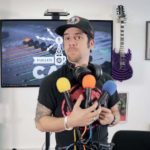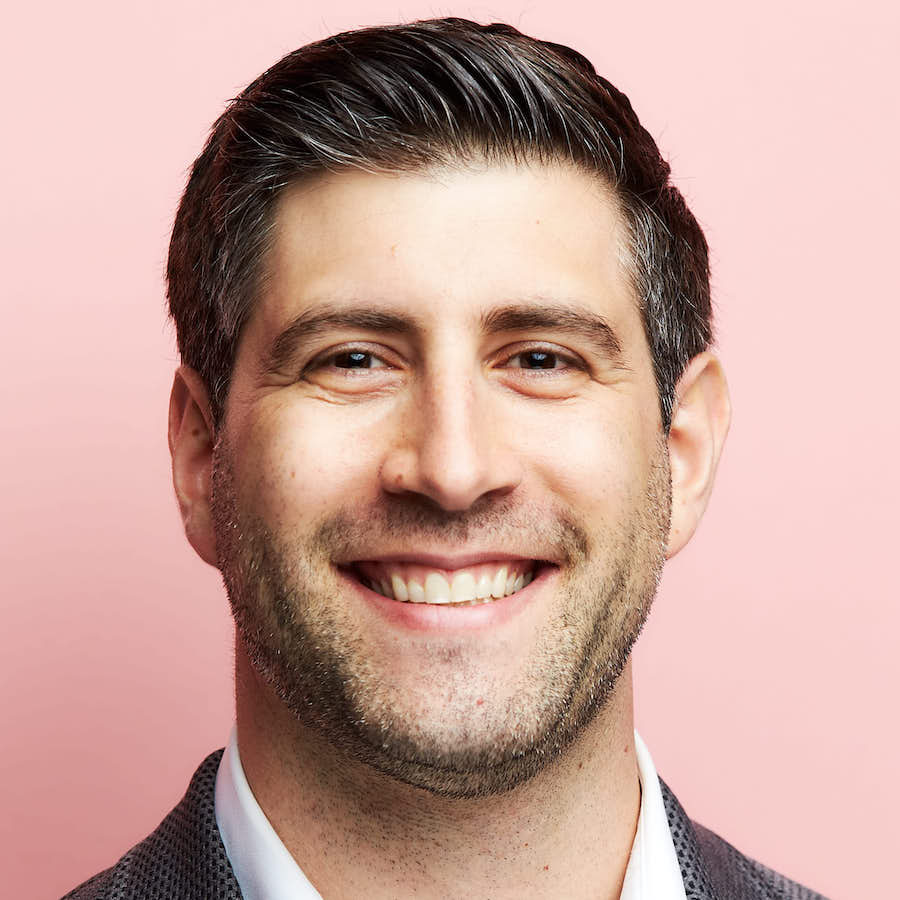Learned the Hard Way: What Marketers Making Shows Wish They’d Known Sooner
November is Make the Case Month at MSR. Every week, we’ll load you up with the big-picture ideas and tactical tips you need to sell your branded show concept to the “powers that be” within your organization. We know that shows are the best vehicle to help grow brand affinity among your customers; this month, we’re helping ensure everyone else at your company understands that, too. If you’re as pumped as we are, catch up on the content we’ve already published and subscribe for exclusive bonus content and conversations here.
![]()
When we say, “We have a plan,” what do we really mean? At the risk of spurring a few heart palpitations when you read this next line, I’d like to suggest something: guess. We mean, “We have a guess.”
That’s all plans are. Sure, by saying the word plan, or strategy, or projection, we try to puff ourselves up a bit to face the impending uncertainty, but make no mistake, uncertainty is indeed what we face whenever we march into the future.
Today, let’s take a brief moment to look to the past, if only briefly, in order to become even more confident. We’ll never be totally sure, but we can at least refine our guess so we put our best foot forward.
I reached out to several of the marketing world’s most creative and experienced showrunners — the individuals responsible for the creation, management, and success of an original series. They represent a diverse array of company sectors and sizes. Of the four I spoke with, two run podcasts, one runs a video show, and the fourth runs both a podcast and video series.
Here’s a brief list of whom I talked to, followed by a few key questions I asked in order to learn one thing: What did they all wish they’d known sooner to set themselves up for showrunning success?
(Oh, and I’d welcome the chance to go deeper with anything our guests today mentioned. If you leave this post with questions, please email me (jay@mshowrunners.com). In addition to answering you directly, we’ll consider writing a full post about your question.)
Our Showrunner Guests
 Dan Slagen, CMO, ThriveHive
Dan Slagen, CMO, ThriveHive
Company profile: ThriveHive sells B2B software and services that help local businesses get found online. The company is a mid-stage startup, founded in 2011. They’re headquartered in Quincy, Massachusetts and have raised just over $5 million in venture capital.
Show profile: ThriveHive operates a video docuseries called Locals, currently in its first season. Dan is the executive producer and host, and he works with a couple video shooters and producers staffed in-house.
 Maggie Crowley, Director of Product Management, Drift
Maggie Crowley, Director of Product Management, Drift
Company profile: Drift sells a suite of software tools, beginning with a chat bot, to help B2B sales and marketing teams hold conversations with website visitors. The company is a growth-stage startup, founded in 2014. They have just under 300 employees, with offices in Boston, San Francisco, and Seattle, and have raised about $107 million in venture capital.
Show profile: Drift operates a network of podcasts called the Hypergrowth Podcast Network. Maggie hosts a show called Build about product management.
 Jeff Ayers, Broadcasting & Marketing, Death Wish Coffee
Jeff Ayers, Broadcasting & Marketing, Death Wish Coffee
Company profile: Death Wish Coffee sells “the world’s strongest coffee.” They’re an e-commerce company based in Ballston Spa, New York. The company is a small business, with around 60 employees, having grown without external funding from an initial product line inside the founder’s single-location coffee shop, Saratoga Coffee Traders.
Show profile: Death Wish has launched three series to date. Jeff hosts the podcast Fueled by Death Cast, which also runs as a slightly tweaked video companion, Fueled by Death Show.
 Ryan Estes, Senior Content Marketing Specialist, Frontline Education
Ryan Estes, Senior Content Marketing Specialist, Frontline Education
Company profile: Frontline Education sells software tools for the K-12 education community. Founded in 1998, the company is now owned by private equity firm Thomas Bravo and is based in Malvern, Pennsylvania. Show profile: Frontline operates the podcast Field Trip, which is hosted by Ryan.
![]()
How did you know your brand was ready for a show?
“I didn’t, and I don’t think you’ll ever ‘know’ when you’re ready if you’ve never done something like this before. For us, I made a deliberate hire to bring on someone (Brian Higgins, who is our all-things-video mastermind) who could film, edit and produce our show. Brian had experience filming and editing in the past and that was all I needed to see. Everything else including storyboarding, being on film, design editing, growth and distribution we’ve learned on the fly. As long as you have a willing team you have what you need to get started. The hardest part is committing and starting; you’ll never feel ready.” – Dan Slagen, CMO, ThriveHive (@DanSlagen)
“Shows, making content, and speaking publicly about what we’re working on and what we’re learning are all a part of our company brand. So for [Drift], making these shows is very authentic to who we are. We were already making videos for each product launch, so it was a small leap to start making longer-form content on product [management] with my show. I did look around for other product podcasts, but in the end it didn’t really matter what anyone else was doing. What mattered was sharing the journey we’re on to constantly get better at building/shipping product.” – Maggie Crowley, Director of Product Management, Drift (@maggiecrowley)
What were your earliest attempts like, and what did you learn?
“We did a ‘zero’ episode that we never aired, though we did play clips of it during our 100th episode celebration. This was mostly a test with my co-host to get a feel for the flow of the show and its segments. Those early episodes were definitely not as polished as the ones coming out now, and the format changed considerably since the beginning. I did learn at that stage to try to bank guest interviews, rather than record week to week, for a weekly show release. Also, I learned after the fact that if you wait to release your first three episodes together, you have a better chance of charting on New and Noteworthy on Apple Podcasts. We just put out Episode 1, and it has been business as usual ever since.” – Jeff Ayers, Broadcast & Marketing, Death Wish Coffee (@JeffWishCoffee)
“What have we learned? Many things!
- Podcasts are a great source of ideas for content.
- Guests are not only very willing to appear on the podcast, they’re also willing to share episodes and help in promotion. This is great not only for reach but for SEO, as it’s a significant part of our backlink strategy.
- We’ve been able to maintain great relationships with people who have appeared as guests, using the podcast to build solid working relationships with people who contribute to content in other ways, including speaking at our conferences
- Podcasts can not only help marketing efforts, they can also impact our industry, as we share meaningful ideas.
- Podcasts influence pipeline, and with multi-touch attribution, we have data to prove it.
- They are a great way to equip our sales force and provide them with resources they can use to add value in their conversations
- They are a way for us to engage with controversial topics when as a company we might otherwise be reluctant to do so.”
– Ryan Estes, Senior Content Marketing Specialist, Frontline Education (@ryestes)
“I made a couple of pilot episodes and shared them internally. To be specific, I did an interview episode and a solo episode on one topic. I shared them with [Drift CEO] David Cancel and the team to get feedback and see if I passed the test. When I started, I thought the interviews would be hardest, but that turned out to be wrong. Solo episodes, where I dig into a specific topic, take 4-5x longer to prep than interviews. I also learned that it’s not enough to have a series of questions ready to ask someone. You have to be ready to scrap your list and follow the conversation. So guests can’t just be smart people, they have to be smart people who are also able to think coherently in the moment.” – Maggie Crowley, Director of Product Management, Drift (@maggiecrowley)
What’s been a surprisingly effective way to grow audience around the show that not enough marketers focus on?
“(1) Employees sharing episodes with business owners they know. (2) Teaser videos to get people excited about each show and all the content you can create off of one episode, like a blog post recap, newsletter, podcast about learnings from each episode, PR opportunities, and speaking events. (3) Growing a subscriber list that just wants to see your next video. It’s fun to see 70% open rates and people genuinely looking forward to your email.” – Dan Slagen, CMO, ThriveHive (@DanSlagen)
“I realized the untapped potential of creating the [podcast] in video format as well. Also, the podcast has split into three specific pieces of weekly content: The interview podcast, consistently coming out every Thursday since episode 1, plus a mini science episode that comes out every Sunday and was an original segment on the long form Thursday podcast. Both of these come out in audio and video formats, allowing for even more content creation from these two parts. [Third], all of the segments we used to have at the beginning of the podcast, like science, the product reveal/updates, the community outreach — all of these and more are part of our weekly live show, which is simulcasted live on the Death Wish Coffee Company Facebook page, our Twitch channel, and on our YouTube live channel at 7pm Eastern every Wednesday night for a much more interactive customer and fan experience.” – Jeff Ayers, Broadcast & Marketing, Death Wish Coffee (@JeffWishCoffee)
“Have an opinion. If you don’t have a sense of what your topic/discipline is, or what it should be, your shows will be aimless. If you have an opinion, you can challenge your guests, interpret their comments, and learn from them. Just interviewing people to interview them is meaningless and probably boring. Set the bar high. Don’t let just anyone on your show. Be picky, and do pre-calls to figure out if it would actually be a good show. If you’re recording solo, write out the outline of your show and the content, and work through it.” – Maggie Crowley, Director of Product Management, Drift (@maggiecrowley)
What are you currently measuring to ensure the show is successful?
“Sure, downloads are fun to see climb — and of course that’s a helpful barometer to see the general trend of the show’s popularity. But because we are such a niche audience, that metric doesn’t tell as much as it might for advertisers looking at a show with mass popularity. We like to look at our multi-touch attribution and see how people are engaging with the podcast as they become leads and ultimately clients. What is the correlation between people listening to the podcast and people becoming leads or clients? We’re still working on building out these metrics, but we are seeing early wins.”– Ryan Estes, Senior Content Marketing Specialist, Frontline Education (@ryestes)
“Start small with your measurements. You can measure everything so focus on what you care about and make those things the best you can. We focus on: (1) How many people are watching each episode? (2) Episode completion rate. (3) Subscribe rate.” – Dan Slagen, CMO, ThriveHive (@DanSlagen)
Any parting wisdom for those thinking of launching a show at their brand?
“It won’t be good at the start, so stop waiting for that to happen, and just launch it. No one likes to say this out loud, but make sure your host has a nice voice and few annoying habits (‘like,’ ‘um,’ ‘you know,’ etc.). It matters. If they sound like they’re reading, it’s not going to work. Find a role model and do what they do. Don’t pick 10 different shows and mash them up into a Frankenstein show. Pick one model that works, and do your version of it.” – Maggie Crowley, Director of Product Management, Drift (@maggiecrowley)
“Come up with an idea, get a plan together, and just give it a shot. If everything works perfectly right out of the gate, write a book about it, because that never happens! Try and fail, reevaluate, adapt, try again. I have been doing this podcast now for almost three years, and I’m still learning new ways to make the show better and make the content perform at the highest levels for the company. You have nothing to lose if your idea doesn’t work, but you have everything to gain if it does.” – Jeff Ayers, Broadcast & Marketing, Death Wish Coffee (@JeffWishCoffee)
Where do you still have questions? What would you like to hear more about? If we can go deeper on any of the things said in this article to help you at your brand, please let us know. Contact MSR founder Jay Acunzo, jay@mshowrunners.com, and we’ll create future posts diving into those subjects more deeply (as well as answer via email right away). Thanks!
Subscribing to our newsletter is a good idea any time, but particularly exciting during November 2019. During MSR’s Make the Case Month, subscribers will receive weekly newsletters with exclusive invitations to chat live with the MSR team. What are you waiting for? Subscribe now!

Founder of Marketing Showrunners, host of 3 Clips and other podcasts and docuseries about creativity, and author of Break the Wheel. I’m trying to create a world where people feel intrinsically motivated by their work. Previously in content marketing and digital strategy at Google and HubSpot and VP of brand and community at the VC firm NextView. I write, tinker, and speak on stages and into microphones for a living. It’s weird but wonderful.
Get in touch anytime: jay@mshowrunners.com // Speaking inquiries: speaking@unthinkablemedia.com

